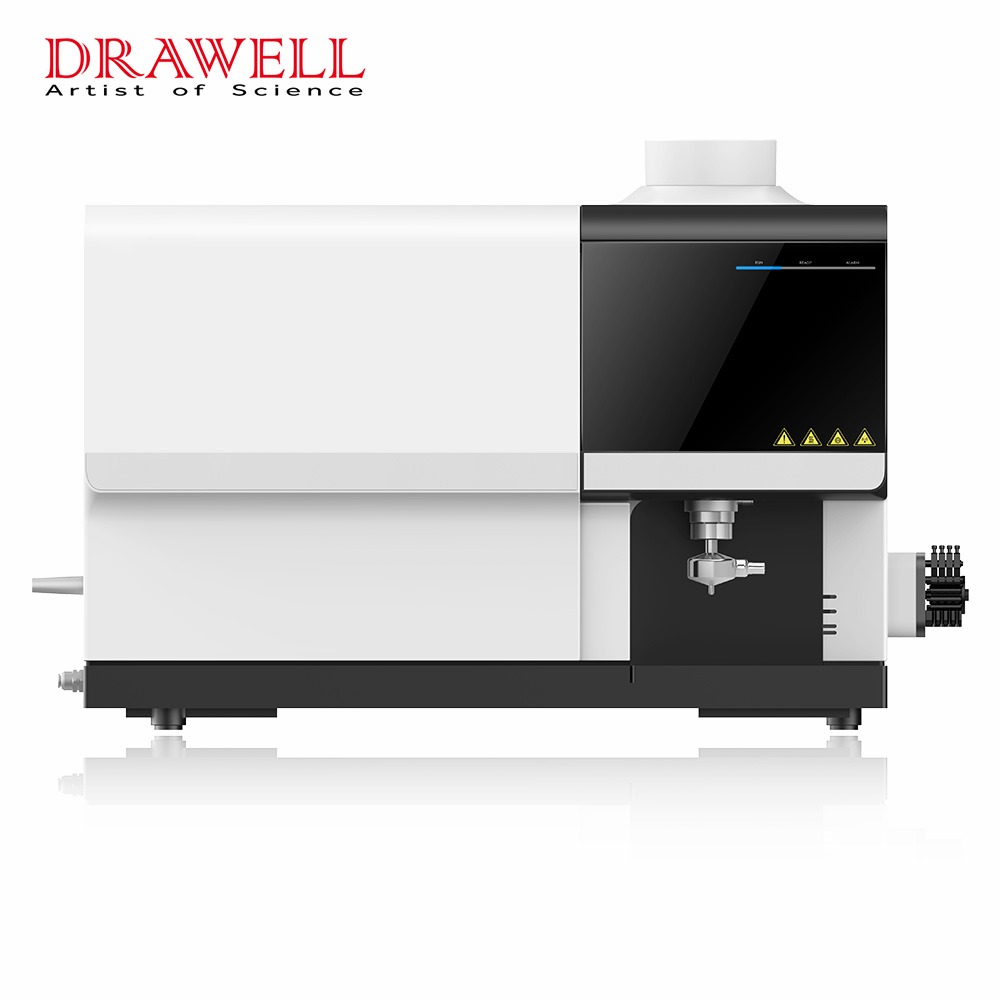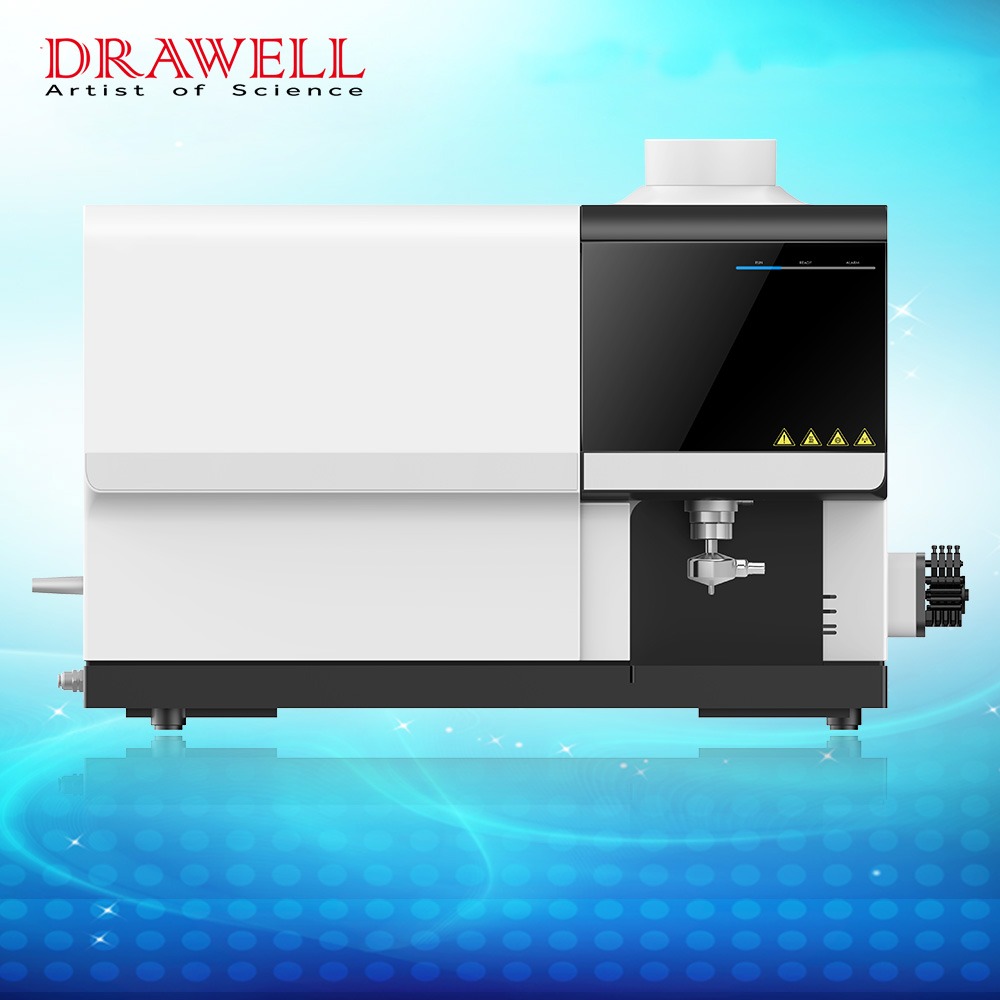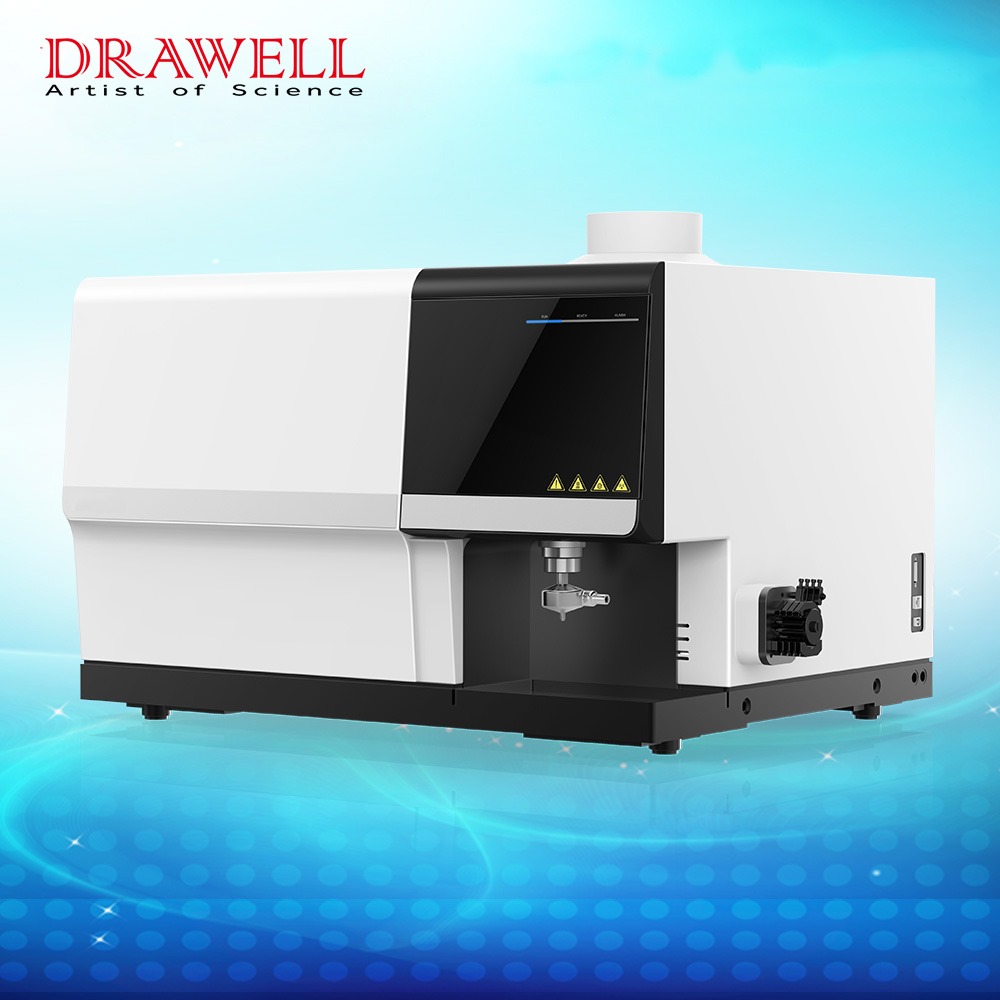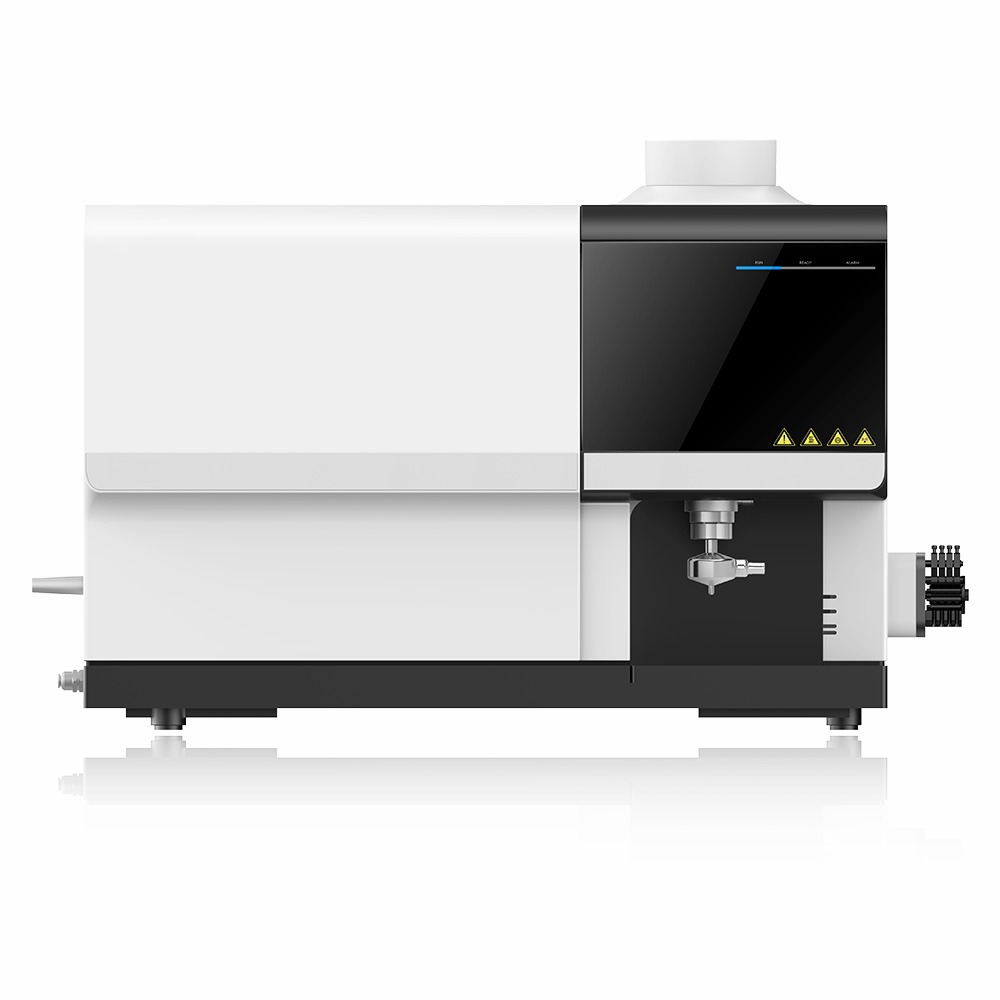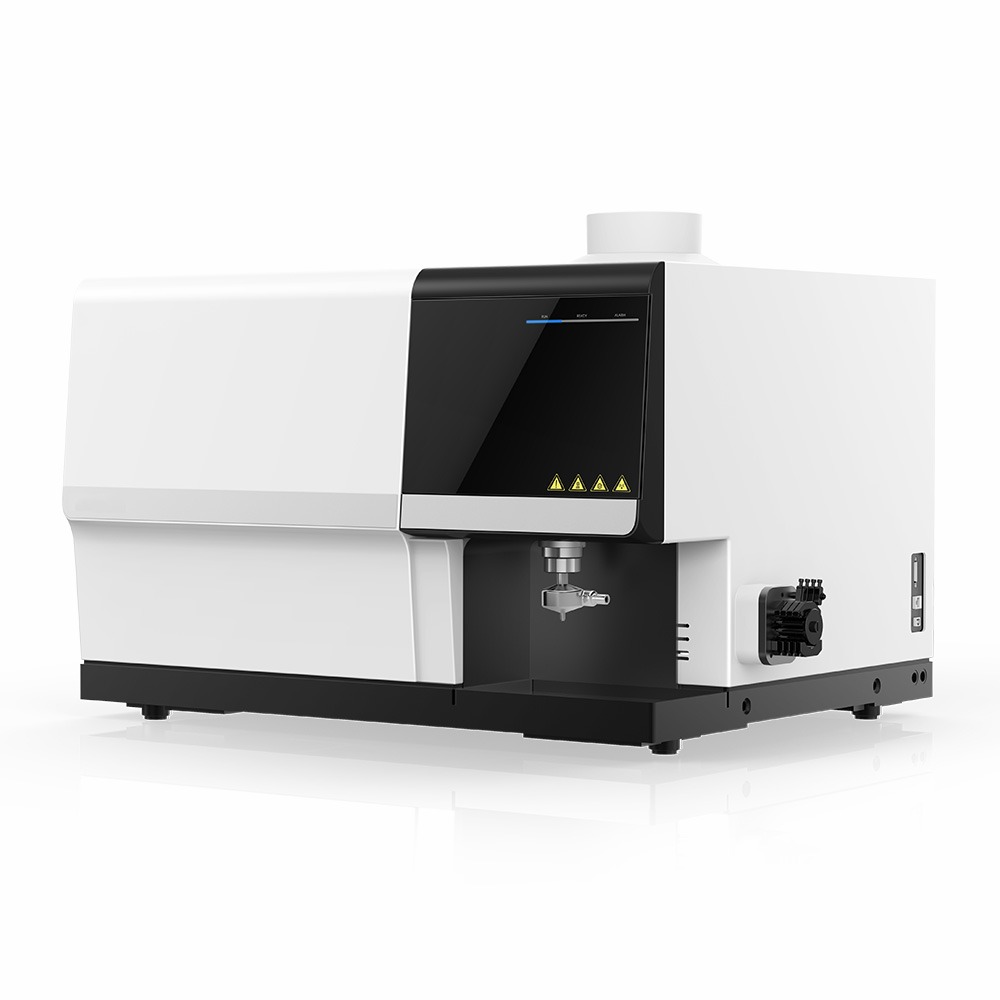ICP-ES DW-EXPEC6500D Inductively Coupled Plasma Emission Spectrometer
The DW-EXPEC6500D full-spectrum direct-reading ICP-ES has excellent anti-interference, analysis and detection performance, and is used to fulfill the high-end analysis demands in research and development as well as detection. And it can be used to carry out qualitative, semi-quantitative and precisely quantitative analysis easily, the ideal instrument for the simultaneous analysis of major, minor and trace inorganic elements.
Work Environment
- Voltage: 220V AC ± 10%
- Room temperature: ambient temperature (10-30)℃
- Relative humidity: (20-80)%RH
Specifications of ICP-ES DW-EXPEC6500D Inductively Coupled Plasma Emission Spectrometer
| Analysis speed | about 200 spectral lines each minute | ||||
| Sample consumption | only 2 ml | ||||
| The determined linear dynamic range of spectral lines | ≥105 (determined by using Mn 257.6 nm; the relevant coefficient ≥0.999) | ||||
| Precision | determine 1 ppm or 10 ppm multi-element mixed standard solutions; the RSD from the repeated 10 times of determination: ≤0.5% | ||||
| Stability | determine 1 ppm or 10 ppm multi-element mixed standard solution; the RSD, for the long-term stability over an 8-hour period: ≤1% | ||||
| Detection limit | (unit: ug/L, the element conforms to the specifications of JJG768-2005) | ||||
| Zn213.856 | Ni231.604 | Mn257.610 | Cr267.716 | Cu324.754 | Ba455.403 |
| 0.5 | 1 | 0.5 | 1 | 1 | 0.1 |
| It can implement qualitative, semi-quantitative and quantitative analysis of any spectral line for the analysis element; it also supports the methods including the internal standard method, standard addition method and interfering element correction | |||||
| Preheating time | the duration from the standby period to the time when the plasma is ignited is shorter than 5 minutes. | ||||
Instrument interface (including coupling analysis software):
- It can fulfill the coupling of the automatic digestion sample processing workstation (in the digestion system, the graphite-digestion electro-thermal mode is adopted to realize the automatic digestion, isochoric and sampling operations, and the simultaneous processing of the samples at over 48 sites is supported)
- It is equipped with the analysis system interface for direct organic sample introduction (it provides the function of sample refrigeration, with the temperature below -15℃);
- It is equipped with the on-line digestion module interface (supporting the functions of on-line automatic electric heat digestion and concentration control as well as the automatic cleaning of sampling pipelines);
- It is equipped with the on-line analysis system interface for hydride generation (supporting the functions of the automatic addition and concentration control of reactive liquid as well as the automatic cleaning of sampling pipelines);
- It can be connected to the ion exchange workstation for valence analysis or the analysis of low-concentration enrichment high-matrix removal;
- It can be connected to the automatic sample injector for analysis (supporting the configurability of over 240 sample sites);
Accessory System
- Computer system: 4GB memory, 500G hard disc; with the DVD, keyboard and mouse
- Cooling circulating water system: The refrigeration capacity of 1,490 W; temperature scope of 5℃ – 35℃.
- Laser printer: Black and white laser printer
- Single-phase AC voltage regulator: 10KVA, accuracy of 1%, input voltage of 160 V – 280 V, output voltage of 220 V.
Features of ICP-ES DW-EXPEC6000D Inductively Coupled Plasma Optical Emission Spectrometer
1. RF Plasma Source
The RF power with the design of dual power supplies under full digital control has a wider power range of 500 W – 1,600 W, the adjustable power, and the stronger sample adaptability.
- Self-excited RF generator: the self-excited power supply can be used to analyze 100% methylbenzene samples directly thanks to its high matching speed and strong power load capacity. It also has the functions of automatic tuning and water cooling, and thus is adaptable to the power switching for complex sample analysis. As it has no moving part, it is resistant to either vibration or interference, which makes it more reliable;
- Standby mode: in this mode, the ultra-low power of 500 W for standing by is provided, and the argon consumption is reduced by over 50%; the argon consumption during the standby period is smaller than or equal to 5 L/min;
- Observation method of plasma: four observation modes are configurable, i. e. axial, radial, bi-directional and simultaneous bi-directional observation modes. The adoption of vertical rectangular tubes can prevent high-salinity deposition, extend its service life, and reduce the use of its consumables. In axial observation, the metal cooled cone is adopted to remove tail flame, and obtain high sensibility; no configuration of any air compressor is required, saving both external fittings and consumption. In radial observation, the location of plasma observation is adjustable for the analysis demands of different elements, providing the stronger anti-interference capacity;
- Intelligent attenuation: there are the functions of axial attenuation and radial attenuation, and the attenuation of the samples with the concentration within 100 times is realizable. This means the analysis of the element that has a high content in the sample can be completed at the first time, requiring no repeated dilution. In this way, the preprocessing of the sample will be less difficult, and the analysis can be simplified;
- Radio Frequency (RF): 27.12 MHz; coupling efficiency: >80%;
- RF power stability: ≤0.1%; RF stability: ≤0.01%.
2. Optical System
The thermostatic 3D optical system has a few reflections and a low optical energy loss. All optical elements are sealed in the thermal balancing optical chamber, and the host and optical chamber are isolated thermally, which can resist the external ambient temperature changes well.
- Optical chamber: precise; kept at the constant temperature of 36℃±0.1℃; argon removing;
- Stable, efficient fully-fixed echelle optical-splitting system: with no moving parts but high vibration resistance, stability and reliability;
- Wavelength range: 160 nm – 900 nm, with full wavelengths covered;
- Monochromator: focal length=380 mm; with the total reflection imaging optical path and quartz prism 2D dispersive system;
- Echelle grating: 87 L/mm, 63.5° blazing; the larger the number of ruled grating lines is, the higher the resolution will be;
- Wavelength correction: For each time of ignition, only spectral lines of C, N and Ar are used for the automatic correction of the spectral position to ensure the correctness of analysis wavelengths, and no wavelength correction solution is required;
- Patented full-spectrum real-time calibration technique (FSC): the interference-free Ne characteristic spectral line is utilized to fulfill the real-time calibration of the fine spectrum offset, realize the optimal spectral integral, ensure long-term stability, and eliminate the effect of the spectral drift on measurement well.
- Purging optical chamber: for the determination of the wavelengths shorter than 189 nm, argon is selected to purge the optical path, and no vacuum pump is required to prevent the vacuum return oil that will contaminate the optical chamber;
- Stray light: ≤2.0 mg/L (10,000 mg/L Ca solution is determined at the location of As 188.980 nm);
- Optical resolution (FWHM): ≤7 pm @ 200 nm.
3. Detector: special large-area array ECCD detector with pixel-level refrigeration
- Detection unit: large-area array CCD detector with the 1,024*1,024 pixel size, in a single exposure;
- Imaging size: 25.4 mm×25.4 mm large-area array imaging and photosensitive units; the large picture element of 24 um × 24 um is adopted to fulfill high-sensitivity response; as the overall breadth is large, both the high resolution and a wider spectral range can be obtained;
- Pixel-level refrigeration: the TEC refrigeration part that is encapsulated in the sensor acts on the pixel element directly, and the cryogenic temperature is higher than -10℃, which can effectively prevent the CCD surface condensation while require no gas purging protection;
- Anti-saturation overflow: the back relief anti-overflow protection is designed for each pixel to eradicate thoroughly the problem of spectrum saturation overflow, and eliminate the concern about the effect of spectrum saturation on the adjacent spectrum;
- Design of intelligent integrates: for the synchronous acquisition of the signal background, the time of exposure is dependent on the spectral luminous intensity; the best time of exposure for the spectrum line is calculated automatically, and both the high-intensity signals and weak signals based on the best signal-noise ratio are obtained; the dynamic range is widened, which enables the simultaneous detection of high-content elements and low-content elements and prevents repeated sample dilution;
There is no light-conversion chemical coating on the detector surface, and there will be no detector damage or change caused by coating aging.
4. Sample Introduction System
- Sampling system: the quartz concentric nebulizer, quartz swirling flow atomizing chamber and detachable rectangular tubes are the standard accessories;
- Argon is optional for on-line dilution. The high-precision MFC controls argon to dilute efficiently the high-salinity samples with the saltness over 10%, and samples are introduced directly.
- The sampling system resistant to high salinity or HF, the organic sampling system and hydride generators are optional;
- Peristaltic pump: 12-roller 4-channel peristaltic pumps are adopted, and the pump speed is adjustable from 0 rpm to 125 rpm automatically and continuously. When stable sampling is ensured, the simultaneous operation of sampling tubes, internal standard tubes, waste liquid tubes and accessory reagent tubes (the hydride generator) can be supported, which is conducive to the analysis of complex samples;
- Control of the gas channel: the precise mass-flow controller is adopted to control the flow of multiple-channel gases, and at most 5 channels can be controlled, including the atomization gas, auxiliary gas, cooling gas and additional expandable gases (O2 and Ar), with the accuracy of 0.01 L/min.
5. Software Performance
Thanks to the graphical operation interface, the software operation is visual and easy. The interface provides the functions of qualitative, semi-quantitative and quantitative analyses;
The method library management software based on classification and versions is conducive to the management, maintenance and preservation of methods; some standard methods that are built in the software can facilitate analysis efficiency;
It has the function of full-spectrum data acquisition, and can record the spectrum lines of all elements. The data can be stored safely, and the functions of both analysis data storage and retrieval are supported for reanalysis in the future;
There is a spectral line library with over 50,000 spectral lines, and at least 30 pixels for each spectral line can be selected for measurement;
It has the function of full-spectrum acquisition, and a complete full spectrum can be obtained from the software to know about the sample spectrum and spectrum interference status;
It has multiple interference-correction methods and the function of real-time background subtraction, such as the standard comparison method, internal standard method, interfering element correction coefficient method (IEC) and standard addition/curve methods, which enrich users’ multiple means of analysis and study;
It has the function of instrument calibration, and supports the functions including rectangular tube collimation and light source optimization, which are conducive to users’ routine maintenance. It also provides the visualized monitoring of instrument operation status;
It provides the login password protection, multi-level operation permission setting, network security management, and permanent storage of historic records;
It has the visualized observation module of rectangular tube flames;
There are both English and Chinese versions of the software;
It has the function of network-based remote service, and has a built-in remote service assistant for remote diagnosis; the 4G Network Data Connection Technology Service Department fulfills the remote diagnosis and maintenance of instruments;
The software design is in complete compliance with the 21 CFR Part 11- regulation of electronic signature; the software provides the three-level administrative authority and the function of audit trailing, conforming to the regulation requirements, such as 3Q certification;
It can integrate the software operations of the automatic analysis instrument platform and on-line analysis instrument platform


